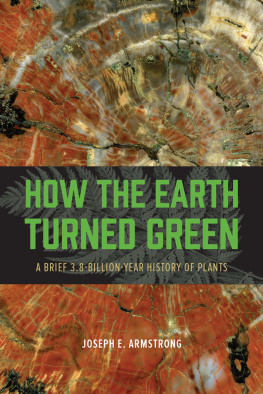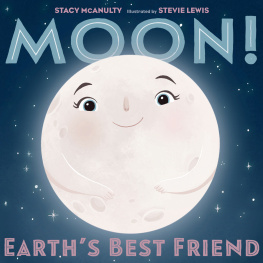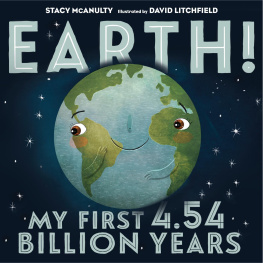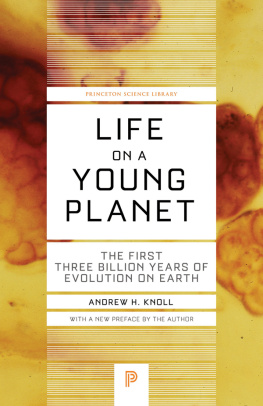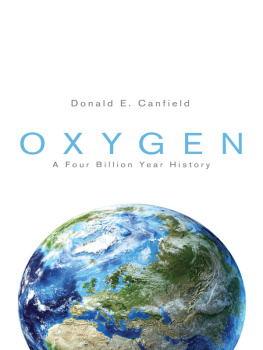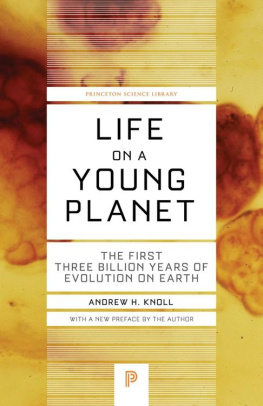Henry Gee - A (Very) Short History of Life On Earth: 4.6 Billion Years in 12 Chapters
Here you can read online Henry Gee - A (Very) Short History of Life On Earth: 4.6 Billion Years in 12 Chapters full text of the book (entire story) in english for free. Download pdf and epub, get meaning, cover and reviews about this ebook. year: 2021, publisher: St. Martins Publishing Group, genre: Religion. Description of the work, (preface) as well as reviews are available. Best literature library LitArk.com created for fans of good reading and offers a wide selection of genres:
Romance novel
Science fiction
Adventure
Detective
Science
History
Home and family
Prose
Art
Politics
Computer
Non-fiction
Religion
Business
Children
Humor
Choose a favorite category and find really read worthwhile books. Enjoy immersion in the world of imagination, feel the emotions of the characters or learn something new for yourself, make an fascinating discovery.

A (Very) Short History of Life On Earth: 4.6 Billion Years in 12 Chapters: summary, description and annotation
We offer to read an annotation, description, summary or preface (depends on what the author of the book "A (Very) Short History of Life On Earth: 4.6 Billion Years in 12 Chapters" wrote himself). If you haven't found the necessary information about the book — write in the comments, we will try to find it.
Henry Gee: author's other books
Who wrote A (Very) Short History of Life On Earth: 4.6 Billion Years in 12 Chapters? Find out the surname, the name of the author of the book and a list of all author's works by series.
A (Very) Short History of Life On Earth: 4.6 Billion Years in 12 Chapters — read online for free the complete book (whole text) full work
Below is the text of the book, divided by pages. System saving the place of the last page read, allows you to conveniently read the book "A (Very) Short History of Life On Earth: 4.6 Billion Years in 12 Chapters" online for free, without having to search again every time where you left off. Put a bookmark, and you can go to the page where you finished reading at any time.
Font size:
Interval:
Bookmark:
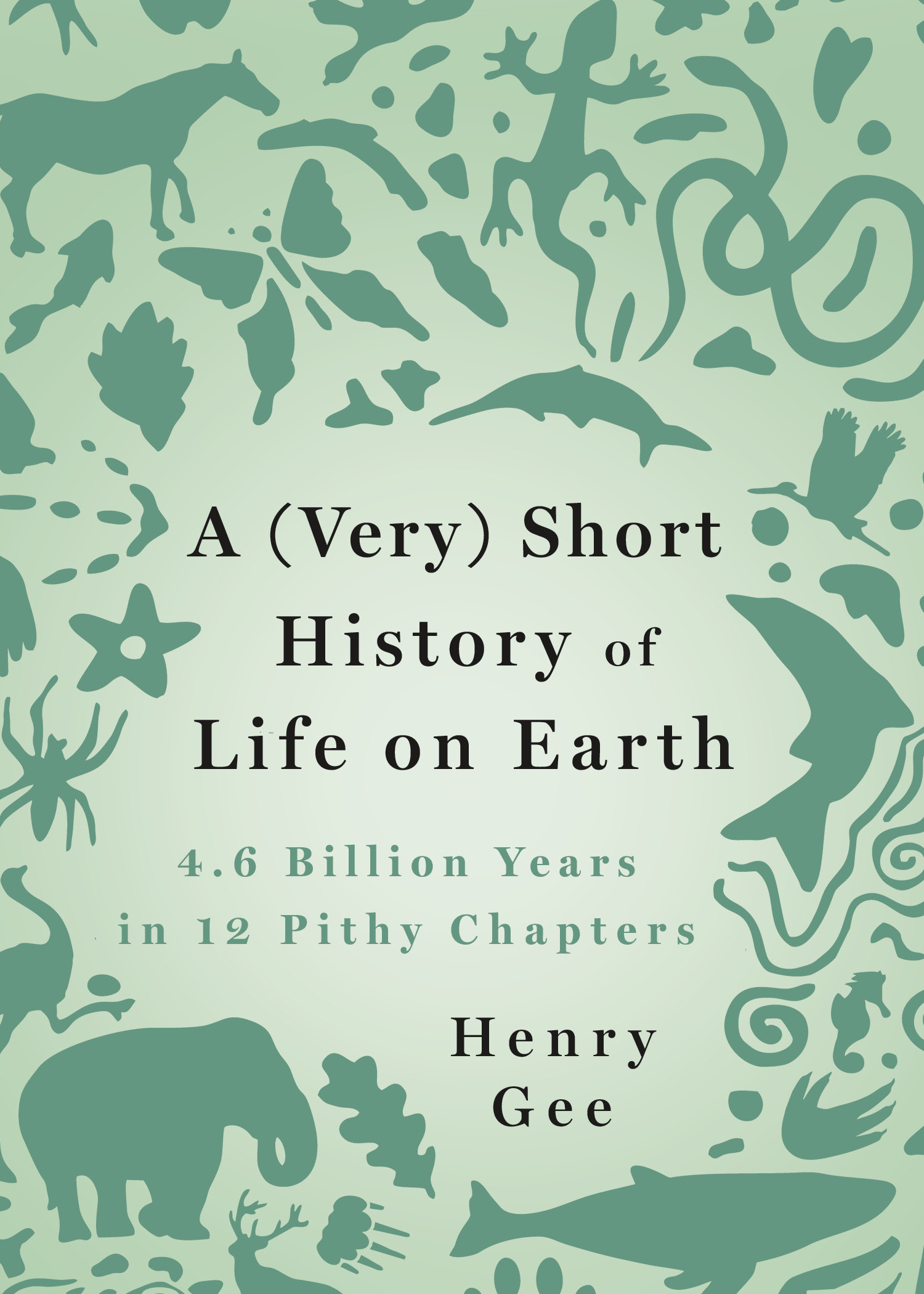

The author and publisher have provided this e-book to you for your personal use only. You may not make this e-book publicly available in any way. Copyright infringement is against the law. If you believe the copy of this e-book you are reading infringes on the authors copyright, please notify the publisher at: us.macmillanusa.com/piracy.
To the memory of Jenny Clack (19472020)
Mentor, Friend

Once upon a time, a giant star was dying. It had been burning for millions of years; now the fusion furnace at its core had no more fuel to burn. The star created the energy it needed to shine by fusing hydrogen atoms to make helium. The energy produced by the fusion did more than make the star shine. It was vital to counteract the inward pull of the stars own gravity. When the supply of available hydrogen began to run low, the star began to fuse helium into atoms of heavier elements such as carbon and oxygen. By then, though, the star was running out of things to burn.
The day came when the fuel ran out completely. Gravity won the battle: the star imploded. After the millions of years of burning, the collapse took a split second. It prompted a rebound so explosive that it lit up the universea supernova. Any life that might have existed in the stars own planetary system would have been obliterated. But in the cataclysm of its death were born the seeds of something new. Even heavier chemical elements, forged in the final moments of the stars lifesilicon, nickel, sulfur, and ironwere spread far and wide by the explosion.
Millions of years later, the gravitational shock wave of the supernova explosion passed through a cloud of gas, dust, and ice. The stretch and squeeze of the gravitational wave made the cloud fall in on itself. As it contracted, it started to rotate. The pull of gravity squeezed the gas at the clouds center so much that atoms began to fuse together. Hydrogen atoms were pressed together, forming helium, creating light and heat. The circle of stellar life was complete. From the death of an ancient star emerged another, fresh and newour Sun.
The cloud of gas, dust, and ice was enriched with the elements created in the supernova. Swirling around the new Sun, it also coagulated into a system of planets. One of them was our Earth. The infant Earth was very different from the one we know today. The atmosphere would have been to us an unbreathable fog of methane, carbon dioxide, water vapor, and hydrogen. The surface was an ocean of molten lava, perpetually stirred up by the impacts of asteroids, comets, and even other planets. One of these was Theia, a planet about the same size as todays Mars. All this happened approximately 4,600,000,000 (4.6 billion) years ago.
Millions more years passed. The day came when the Earth had cooled enough for the water vapor in the atmosphere to condense and fall as rain. It rained for millions of years, long enough to create the first oceans. And oceans were all there were; there was no land. The Earth, once a ball of fire, had become a world of water. Not that things were any calmer. In those days the Earth spun faster on its axis than it does today. The new Moon loomed close above the black horizon. Each incoming tide was a tsunami.
A planet is more than a jumble of rocks. Any planet more than a few hundred kilometers in diameter settles out into layers over time. Less dense materials such as aluminum, silicon, and oxygen combine into a light froth of rocks near the surface. Denser materials such as nickel and iron sink to the core. Today, the Earths core is a rotating ball of liquid metal. The core is kept hot by gravity and the decay of heavy radioactive elements such as uranium, forged in the final moments of the ancient supernova. Because the Earth spins, a magnetic field is generated in the core. The tendrils of this magnetic field reach right through the Earth and stretch far out into space. The magnetic field shields the Earth from the solar wind, a constant storm of energetic particles streaming from the Sun. These particles are electrically charged and, repelled by the Earths magnetic field, bounce off or flow around the Earth and into space.
The Earths heat, radiating outward from the molten core, keeps the planet forever on the boil, just like a pan of water simmering on a stove. Heat rising to the surface softens the overlying layers, breaking up the less dense but more solid crust into pieces and, forcing them apart, creates new oceans between. These pieces, the tectonic plates, are forever in motion. They bump against, slide past, or burrow beneath one another. This movement carves deep trenches in the ocean floor and raises mountains high above it. It causes earthquakes and volcanic eruptions. It builds new land.
As the bare mountains were thrust skyward, vast quantities of the crust were sucked back into the depths of the Earth in deep ocean trenches at the edges of the tectonic plates. Laden with sediment and water, this crust was drawn deep into the Earths interioronly to return to the surface, changed into new forms. The ocean-floor sludge at the fringes of vanished continents might, after hundreds of millions of years, reemerge in volcanic eruptions or be transformed into diamonds.
Amid all this tumult and disaster, life began. It was the tumult and disaster that fed it, nurtured it, made it develop and grow. Life evolved in the deepest depths of the ocean, where the edges of tectonic plates plunged into the crust and where boiling hot jets of water, rich in minerals and under extreme pressure, gushed out from cracks in the ocean floor.
The earliest living things were no more than scummy membranes across microscopic gaps in rocks. They formed when the rising currents became turbulent and diverted into eddies and, losing energy, dumped their cargo of mineral-rich debris
Protected from the chemical clamor of the outside world, these tiny pools were havens of order. Slowly, they refined the generation of energy, using it to bud off small bubbles, each encased in its own portion of the parent membrane. This was haphazard at first but gradually became more predictable as a result of the development of an internal chemical template that could be copied and passed down to new generations of membrane-bound bubbles. This ensured that new generations of bubbles were, more or less, faithful copies of their parents. The more efficient bubbles began to thrive at the expense of those less well-ordered.
These simple bubbles found themselves at the very gates of life, in that they found a way to haltif temporarily and with great effortthe otherwise inexorable increase in entropy, the net amount of disorder in the universe. Such is an essential property of life. These foamy lathers of soap-bubble cells stood as tiny, clenched fists, defiant against the lifeless world.
Perhaps the most amazing thing about lifeapart from its very existenceis how quickly it began. It stirred itself into existence a mere 100 million years after the planet itself formed, in volcanic depths when the young Earth was still being bombarded from space by bodies large enough to create the major impact craters on the Moon. Life on Earth had fully arrived.
Font size:
Interval:
Bookmark:
Similar books «A (Very) Short History of Life On Earth: 4.6 Billion Years in 12 Chapters»
Look at similar books to A (Very) Short History of Life On Earth: 4.6 Billion Years in 12 Chapters. We have selected literature similar in name and meaning in the hope of providing readers with more options to find new, interesting, not yet read works.
Discussion, reviews of the book A (Very) Short History of Life On Earth: 4.6 Billion Years in 12 Chapters and just readers' own opinions. Leave your comments, write what you think about the work, its meaning or the main characters. Specify what exactly you liked and what you didn't like, and why you think so.

